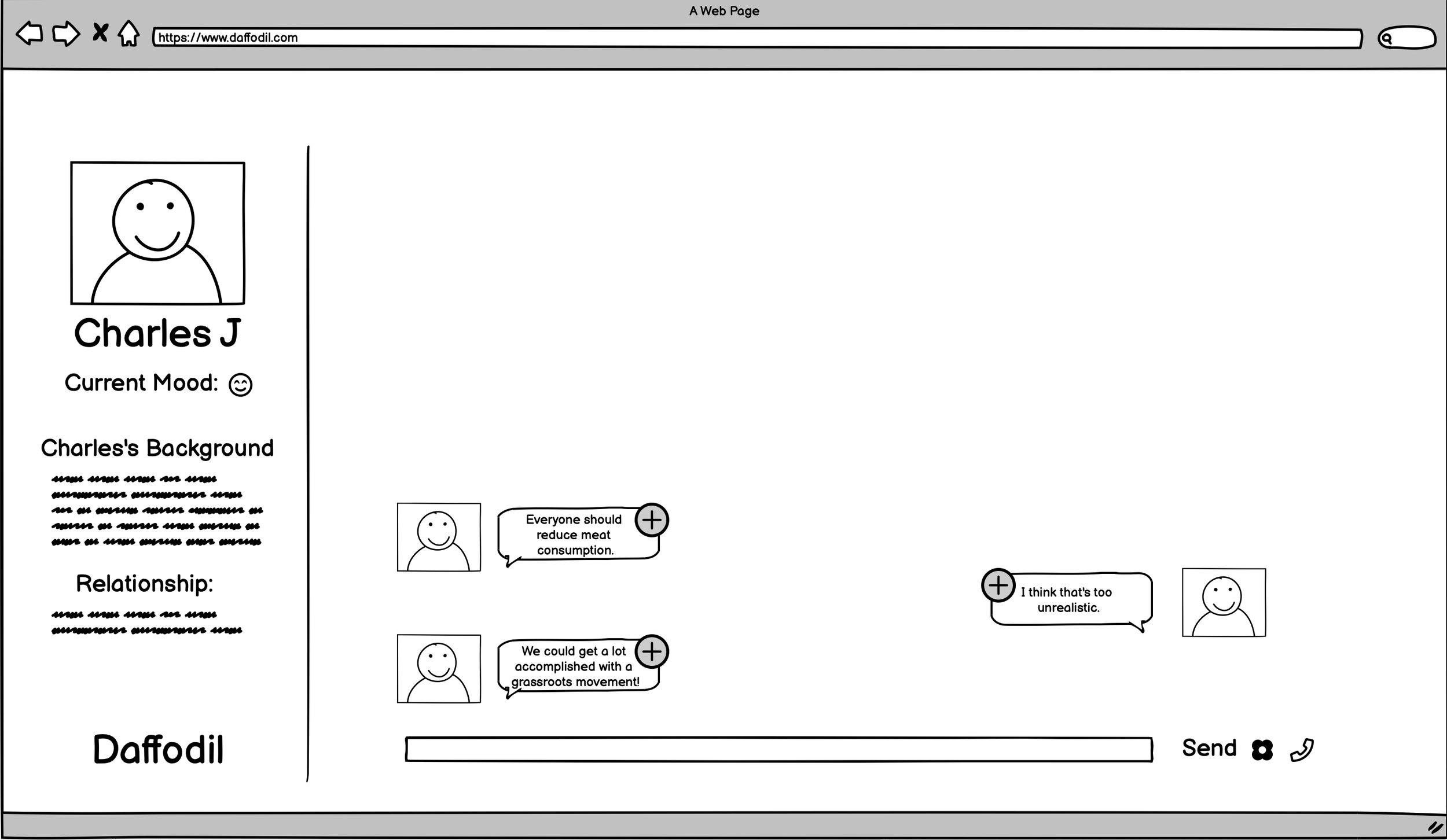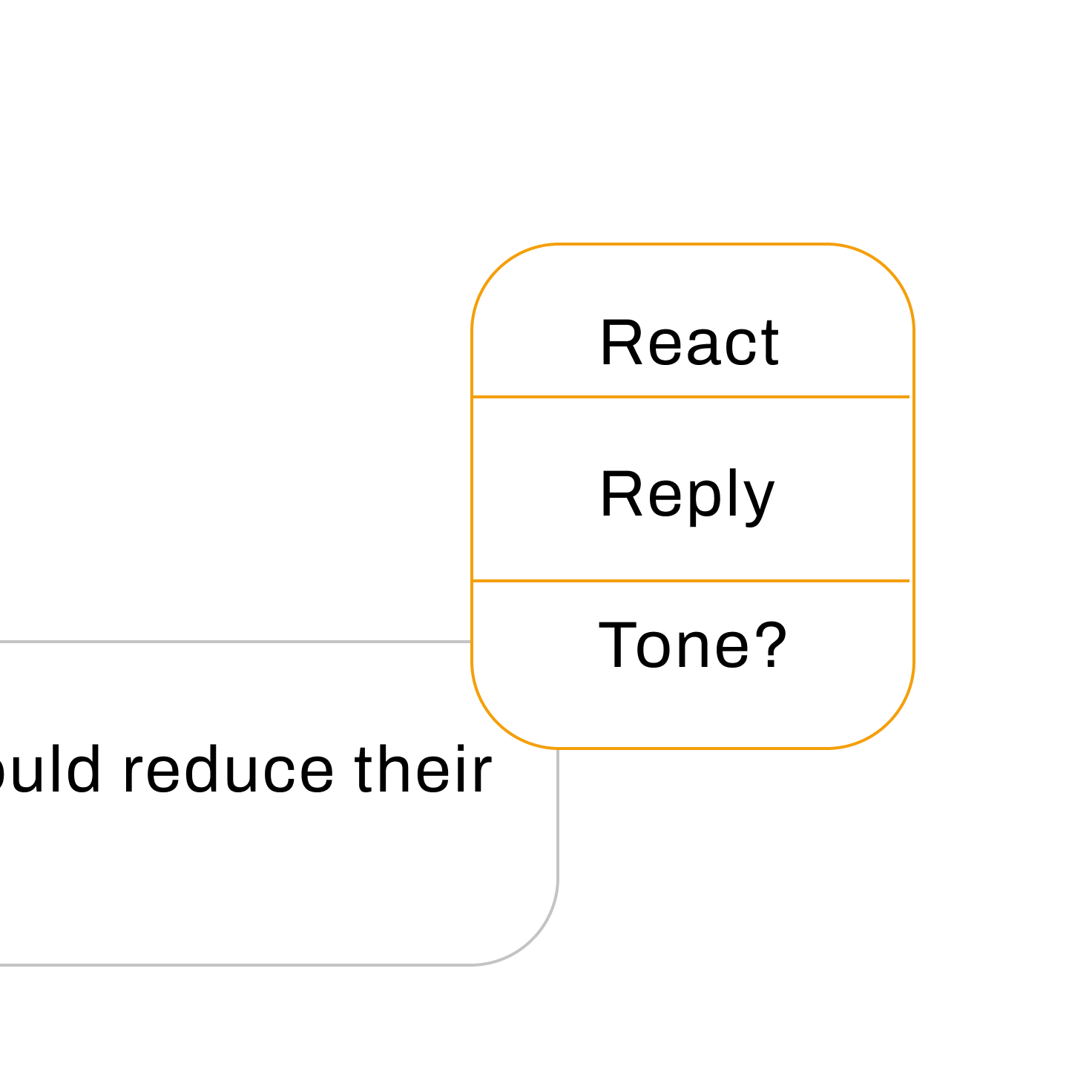〰️
Interaction Design
〰️
UX/UI
〰️
Branding
〰️
UX Research
〰️
Product Design
〰️ Interaction Design 〰️ UX/UI 〰️ Branding 〰️ UX Research 〰️ Product Design
Daffodil
Problem
Led by Amanda Baughan, PhD candidate at the University of Washington, the Daffodil team studied how messaging platforms can enhance resolving interpersonal conflicts between two individuals with an existing relationship.
Solution
Team Daffordil interviewed five psychotherapists and eleven social media users to learn about conflict resolution best practices and users' online conflict experiences. Using these findings, we developed four interventions to improve communication, navigate emotional flooding, and taking pauses. Taking a pause could reduce response anxiety, but users felt uncomfortable setting a timer. We also explored balancing the relationship and user needs in digital design.
Role
Spearheaded the development of user-centric interface designs for the Daffodil project, led by a Ph.D. candidate from the University of Washington.
Conducted extensive user research to gain insights into the needs and preferences of the target audience and translated these findings into visually attractive and user-friendly interactive prototypes.
Developed and maintained a design system to ensure consistency across all project components, contributing to a polished and professional aesthetic that aligned with the project's objectives and the University of Washington's academic standards.
Basic Info
Client
Amanda Baughan, PhD Candidate
Year
2021
Methods
Interviews
Wireframing
Paper Prototyping
Tools
Balsamiq Wireframes
Figma
Wireframes
Key Feature
Users can use tone indicators to request the meaning of a message without needing to put it into words. This method of communication is particularly useful for people in neurodivergent communities, such as individuals with Autism and ADHD.






